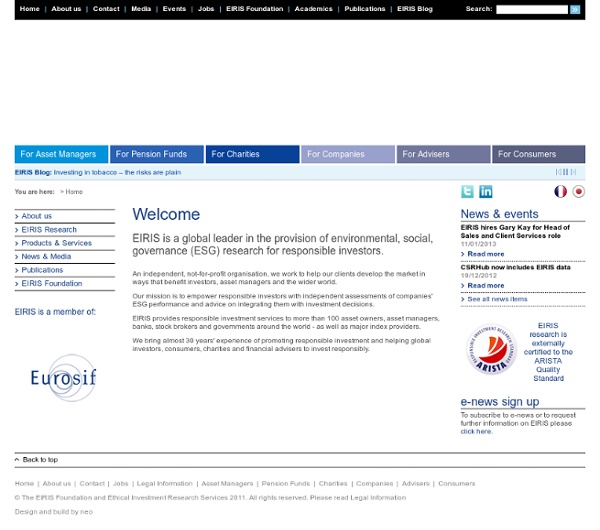EIRIS

Démocratie & Entreprises
Lancaster & District Green Party
Deminor
Ask Nature - the Biomimicry Design Portal: biomimetics, architec
ETHIBEL, consultancy agency for socially responsible investing
An Ethibel label fund only invests in shares of companies with a high CSR score. It comes down to keeping the balance between economic progress, environmental protection and social responsibility. Is your investment sustainable because you do not have shares in companies which produce weapons or are involved in nuclear energy?Maybe so, maybe not.How is the staff treated and how do they use raw materials. Forum ETHIBEL only allows shares of companies with a high CSR score at all levels.It allows us to encourage the business world to make serious work of corporate social responsibility. And not to aim for quick returns at the expense of people and the environment. Our certifications and audits: indispensable instruments for companies who are dedicated to corporate governance and transparent entrepreneurship
Graines de Changement
csrgeneva
Corporate Social Responsibility and Sustainability News, Press Releases, Feeds, Events and More
Sustainable Value
Related:
Related:




EIRIS is a leading global provider of research into corporate environmental, social and governance performance.Empowering responsible investors with independent assessments of companies and advice on integrating them with investment decisions by sosmart_eu Aug 24